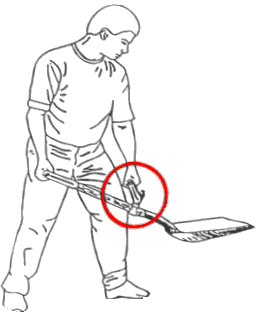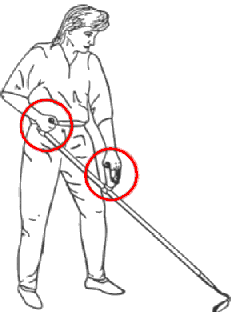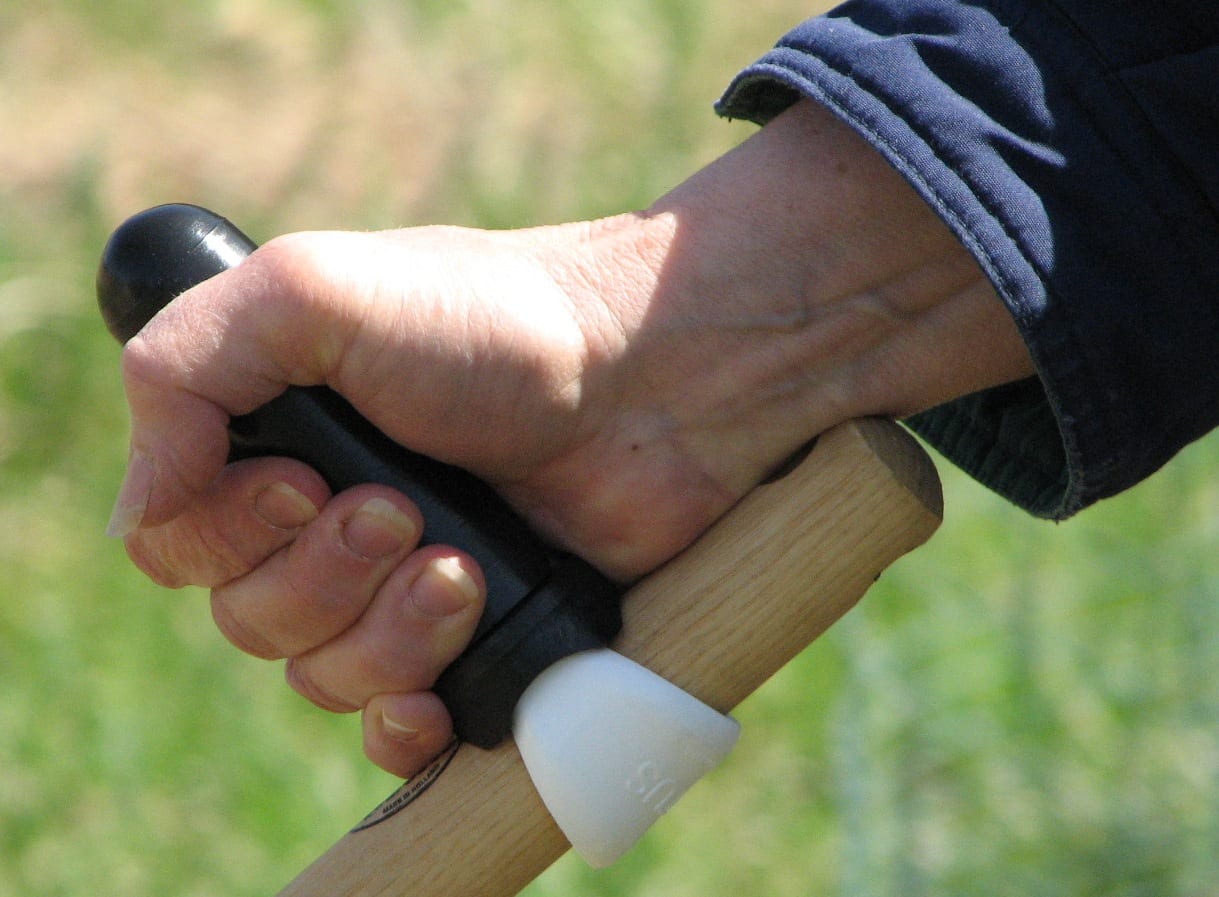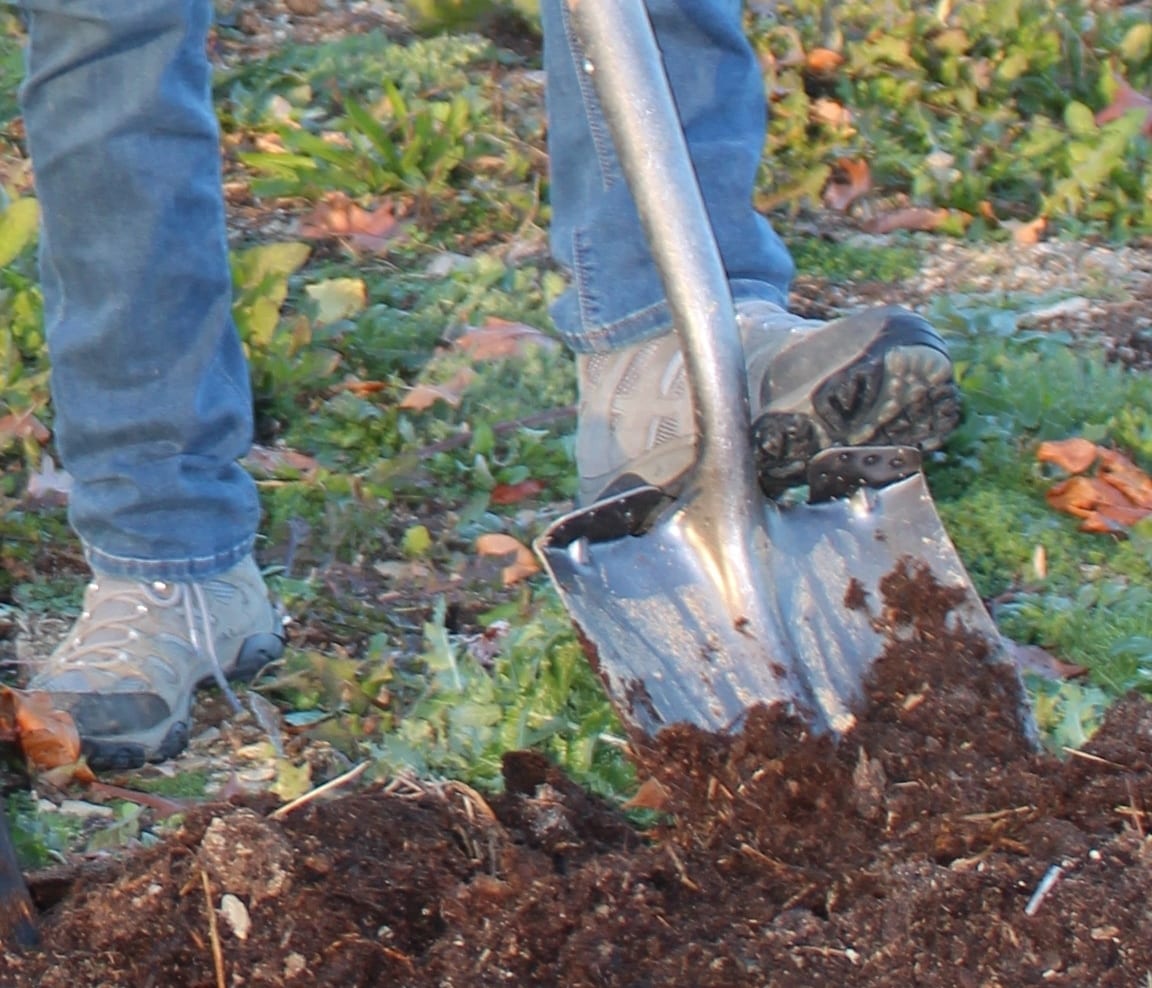by Liz Brensinger
Ergonomics, principle #1: If a tool is labeled as ergonomic but no one can tell you what makes it so, it probably isn’t.
Ergonomics, principle #2: If a tool doesn’t make your work easier, more comfortable and/or safer, it definitely isn’t!
So what IS ergonomic? A basic definition is “designed for maximum comfort, efficiency, safety, and ease of use, especially in the workplace.” If tools and equipment are meant to make our lives easier – and they are – then ergonomic tools and equipment do it that much better.
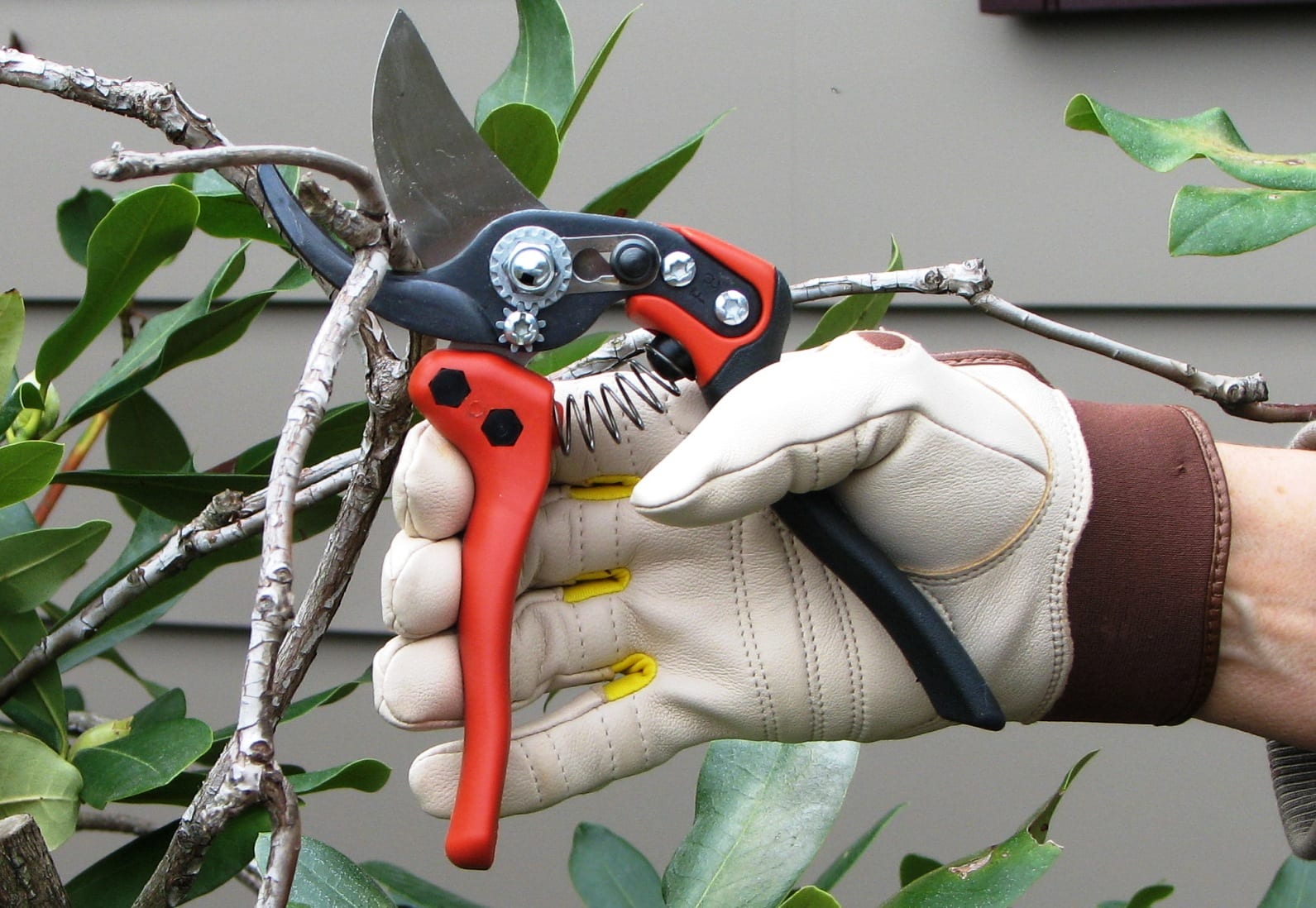
The design of the BAHCO Professional Ergonomic Pruner keeps the wrist straight during use, increasing comfort and efficiency.
Conversely, tools and equipment that don’t fit us can actually hurt us. By “fit,” I mean not only fitting our bodies but also fitting our work styles. If a tool doesn’t fit, it can cause or contribute to injuries and disabilities – including chronic problems such as musculoskeletal disorders (MSDs), of which lower back pain is the most common.
According to the National Institute for Occupational Safety & Health, risk factors for musculoskeletal disorders include:
- Heavy physical work
- Lifting and forceful movements
- Bending and twisting (awkward postures)
- Whole-body vibration
- Highly repetitive tasks
Do any of these risk factors sound familiar? To reduce them, we can change how we do our work, and we can switch to ergonomic tools.
How do you know if a tool is truly ergonomic?
Most basically, the tool should fit you. In a world in which the absurd phrase “one size fits all” is all too common, that can be tricky. In general, though, look for tools that feel right – that aren’t too heavy or too big or too long. It’s especially important that tools used to carry loads – shovels, for example – aren’t excessively long, because the longer a shaft is, the farther away from your body the load will be. Far away from your body means diminished strength and greater stress on your back. Tools shouldn’t feel awkward, and they should feel good in your hands. An ideal diameter for a tool grip, for example, is large enough that you don’t have to constrict your fingers but not so large that you lack full control of the tool.
Even though most individual tools come in one size only, there’s enough variety among tools that some will surely work better for you than others. Even better:
- Some tools, such as professional-quality pruners, do come in multiple sizes. Ideally, companies that produce multi-sized tools will have clear, easily understandable guidelines to help you determine which is best for you.
- Some pieces of equipment are easily adjustable. When you’re pushing or walking behind a piece of equipment – whether a mower or a wheel hoe or a snow blower – handle height is important. Look for equipment whose handle height is easily adjustable to accommodate users of various heights. FYI, you have the most strength when your elbows are in close to your body and bent at a 90-degree angle or close to it. If you’re trying to push something with your hands above your shoulders, your strength is diminished and you’re more likely to hurt yourself.
- A few companies still make custom tools. As an example, at least two companies custom-make scythes based on your own arm length and other dimensions.
Second, look for tools and equipment that allow your back & your joints to remain in a “neutral” – unbent, untwisted – position. For example:
- Push-pull tools such as hoes are best when the shaft is long enough that you can remain in a fully upright position while working.
-
Shovels and spades with D-grips are generally more ergonomic than long-handled tools that have only a straight wooden shaft to grasp. The latter tools force you to bend and twist your wrist(s) just to hold the tool, whereas a shovel with a D grip allows you to keep your wrist(s) relatively straight. Best of all are oversized D-grips that allow for two-handed digging and multiple hand-placement options.
- Similarly, push-pull tools with “pistol grips,” also known as “P” or “T” grips, at the end – much more common in Europe than here, unfortunately – allow your wrist to remain in a neutral position and you to fully leverage the power of your upper body.
-
Add-on ergonomic “D” and “T” grips – typically low-cost, made of plastic and transferrable from one tool to another – can greatly improve the ergonomics of your existing tools. An add-on D grip, for example, can be mounted midway down the shaft of a spade or shovel to minimize back bend and transform the tool into a lever for easier lifting.
Third, choose tools that fit not just your body but also your work style. For example: women’s greatest strength is in our lower bodies. Therefore, tools that allow us to leverage that strength are preferable to tools relying mostly on upper-body strength. At Green Heron Tools, we’ve received USDA support to work with teams of engineers to design agricultural tools that are truly ergonomic for women – aka hergonomic®. Among the features of our shovel-spade hybrid and our spading fork (in addition to three shaft lengths to match user height) is an enlarged step that allows the user to safely/comfortably put the full weight of her body and the full power of her legs into digging. As it happens, men love this feature too – narrow blade-tops cut into the bottom of the foot, can lead to conditions such as plantar fasciitis, and are dangerous for anyone trying to jump on or stand on a blade for additional digging leverage. But the enlarged step is especially important for women given where our strengths are.
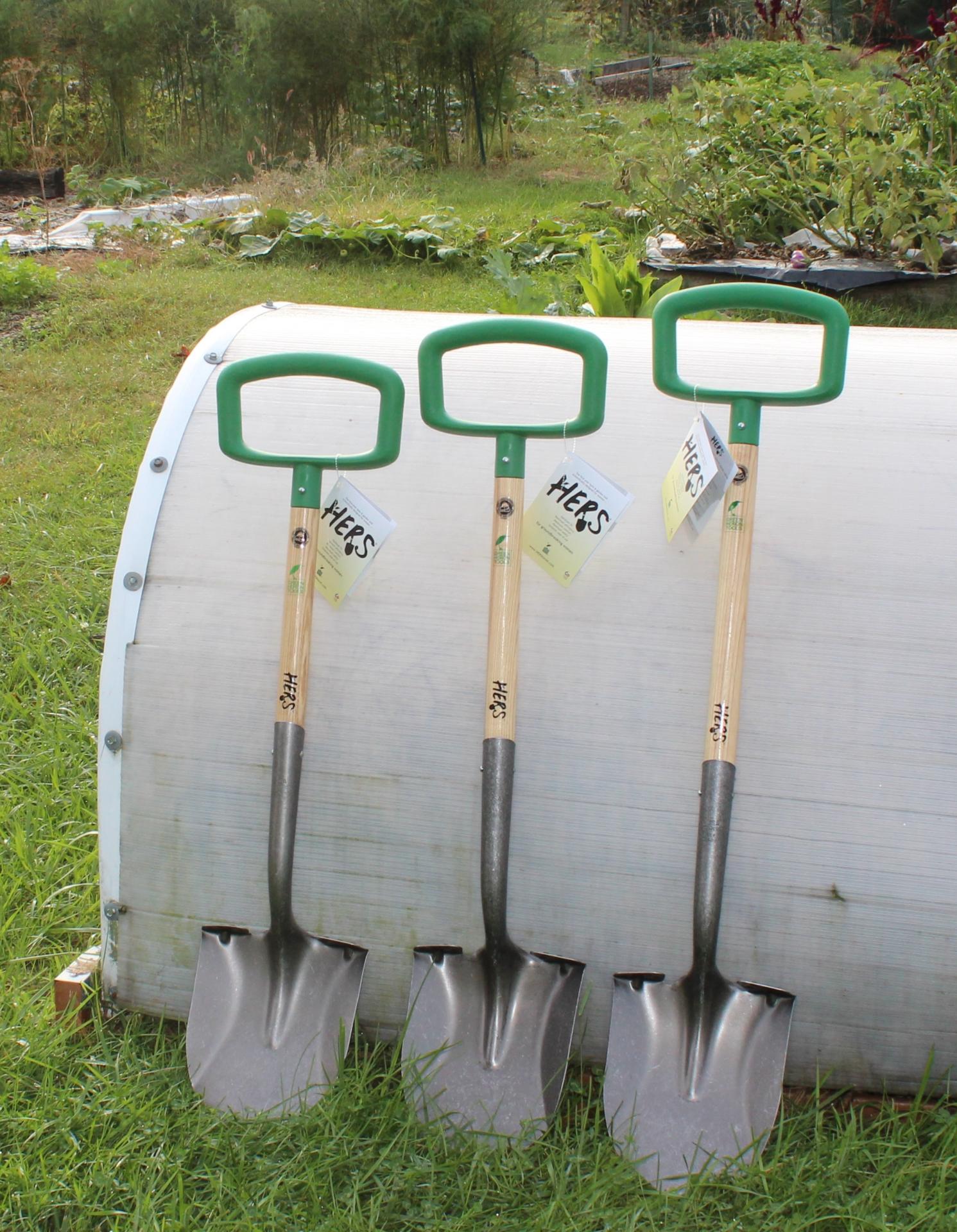
Designed with women’s greater lower-body strength in mind, these shovels offer three handle lengths and enlarged step.
Fourth, consider specific technologies such as ratcheting that reduce stress and demands on your own muscles and joints. Anything that reduces wear and tear on your body is, virtually by definition, ergonomic.
Fifth, be a healthily skeptical consumer. Lots of companies have realized that consumers care about ergonomics, but only a subset of those take ergonomics seriously. That’s why some allegedly “ergonomic” tools are anything but. If you see a tool labeled “ergonomic” that looks no different from any other tool – AND if the company provides no explanation of their “ergonomic” features – you may want to look elsewhere.
Finally, and perhaps most importantly, be smart about how you use your tools, whatever they are! Your own body, we would argue, is your most important tool. Vary your tasks and body positions often throughout the day to minimize your risk of repetitive-motion injuries and the aches & pains that come from overuse. When you’re working, stay present and listen to your body. If you start to experience pain, your body is communicating with you. By all means, listen!
For more information on ergonomics, feel free to visit our website, www.greenherontools.com, and click on either “Resources” (current website) or “Staying Healthy” (new website, live later in 2018).
About the Author
Liz Brensinger is co-owner of Green Heron Tools, a small Pennsylvania company that is the first in the world to focus on the scientific design of agricultural and gardening tools and equipment that are ergonomic for women. Green Heron has received four Small Business Innovation Research grants from the U.S. Department of Agriculture, enabling the company to research the tool and equipment needs of women farmers throughout the U.S. and to work with teams of engineers and ergonomists to design new equipment. Liz has a Master of Public Health degree, and her previous work experience includes consulting to nonprofits, teaching in a university public health program and working as a print journalist. She is also an avid gardener and former market grower.
***
Each author appearing herein retains original copyright. Right to reproduce or disseminate all material herein, including to Columbia University Library’s CAUSEWAY Project, is otherwise reserved by ELA. Please contact ELA for permission to reprint.
Mention of products is not intended to constitute endorsement. Opinions expressed in this newsletter article do not necessarily represent those of ELA’s directors, staff, or members.

